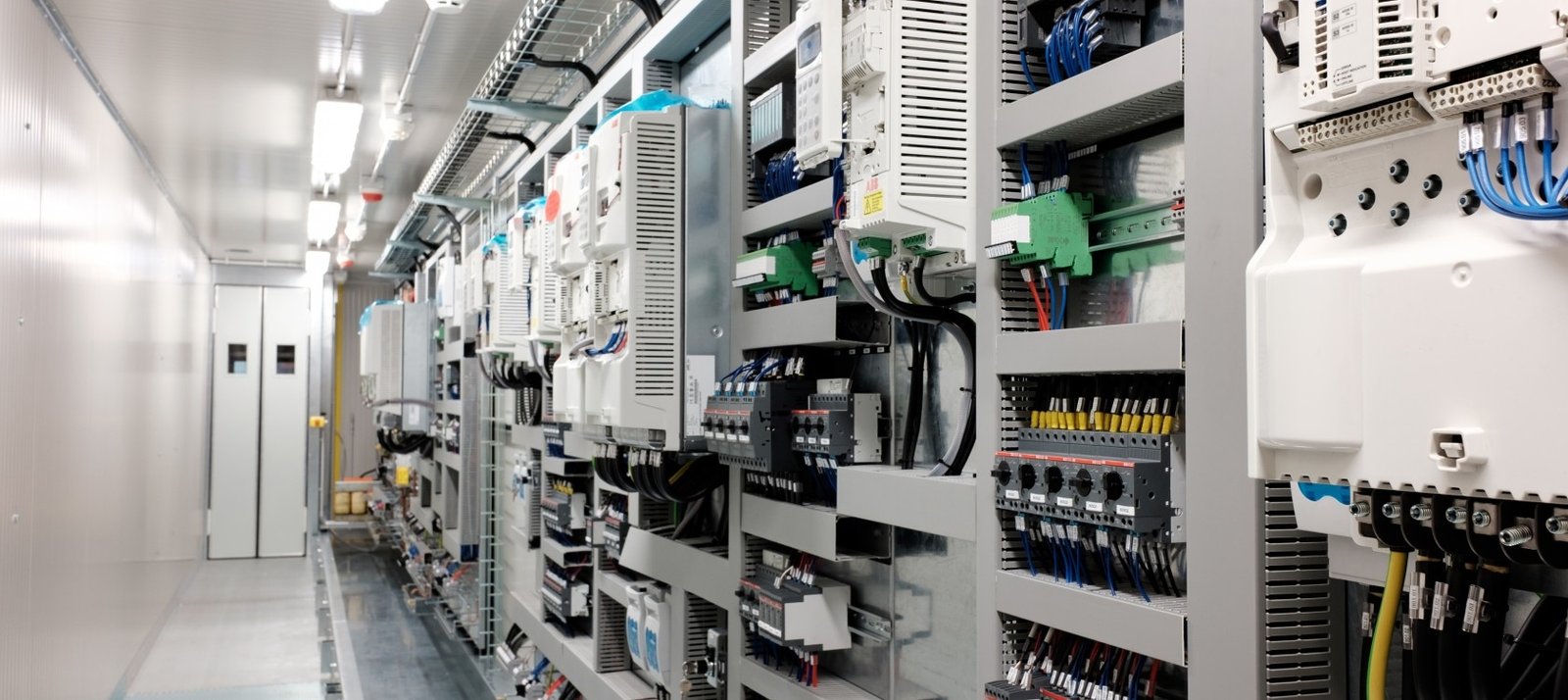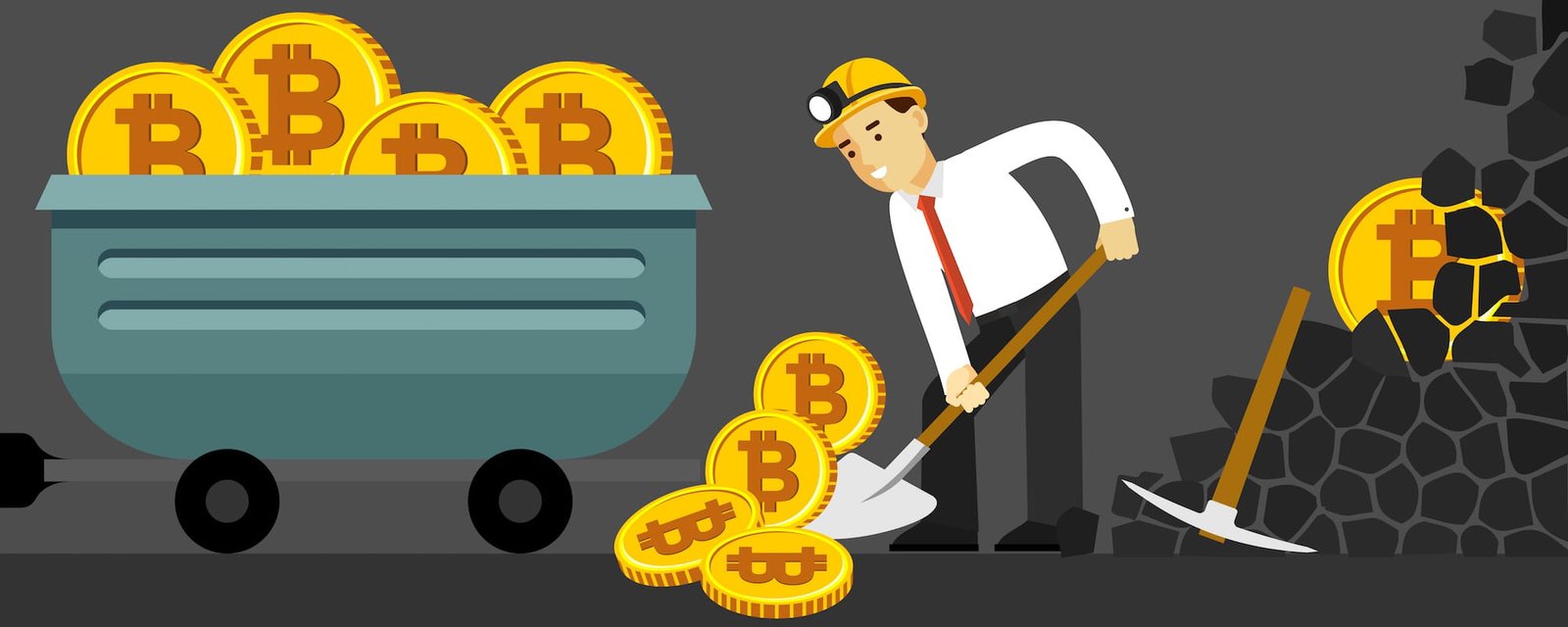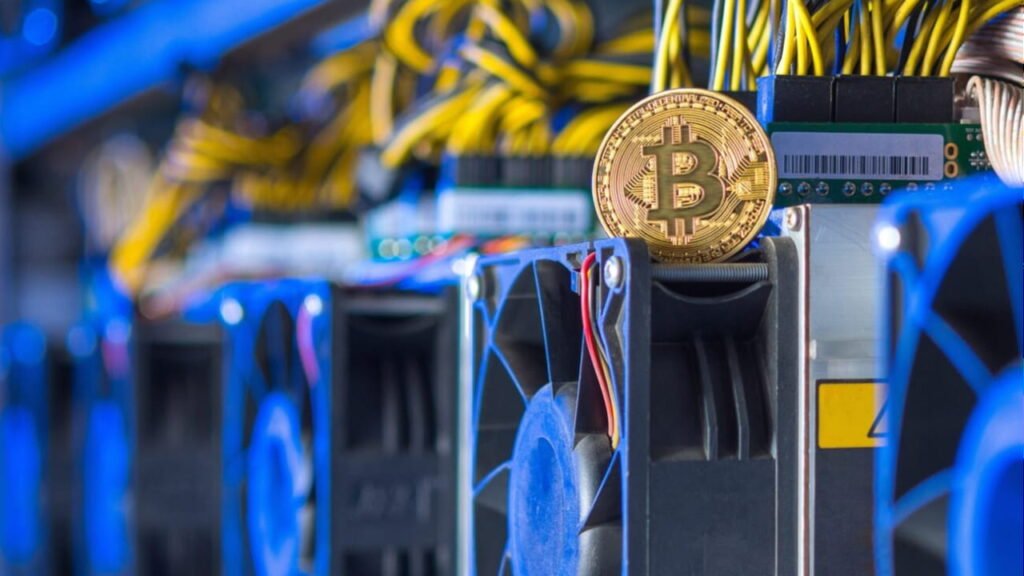The cryptocurrency landscape has evolved dramatically, and understanding Bitcoin mining farm equipment costs has become crucial for anyone considering entering this lucrative yet complex industry. Whether you’re an individual investor looking to scale up operations or a business exploring industrial-scale mining, the financial commitment required for a successful mining farm can be substantial.
In today’s competitive environment, Bitcoin mining farm equipment costs range from tens of thousands to millions of dollars, depending on your operational scale and efficiency goals. This comprehensive guide will break down every aspect of mining farm expenses, helping you make informed decisions about your investment.
Understanding Bitcoin Mining Farm Equipment Costs
Bitcoin mining has transitioned from a hobbyist activity to a highly competitive industrial operation. The days of profitable CPU and GPU mining are long gone, replaced by specialized hardware that demands significant capital investment. Modern Bitcoin mining operations require sophisticated equipment designed specifically for cryptocurrency mining, and the associated costs can be overwhelming for newcomers.
The primary components that contribute to Bitcoin mining farm equipment costs include ASIC (Application-Specific Integrated Circuit) miners, cooling and ventilation systems, power distribution units (PDUs), electrical infrastructure, monitoring systems, and physical facility modifications. Each of these elements plays a critical role in creating a profitable and sustainable mining operation.
When calculating the total investment required, most successful mining farm operators recommend budgeting for at least 18-24 months of operational expenses in addition to the initial equipment costs. This approach ensures that your operation can weather market volatility while maintaining consistent profitability.
ASIC Miner Prices and Bitcoin Mining Farm Equipment Costs
The foundation of any Bitcoin mining operation lies in its ASIC miners, which typically represent 60-70% of total Bitcoin mining farm equipment costs. These specialized machines are designed exclusively for Bitcoin mining and offer the highest hash rates and energy efficiency available in the market.
Current ASIC Miner Pricing Breakdown
Leading ASIC manufacturers like Bitmain, MicroBT, and Canaan offer various models with different price points and performance characteristics. The Antminer S21 series, currently among the most efficient miners available, costs between $3,500 and $5,000 per unit, depending on market conditions and order volume. For large-scale operations ordering 100+ units, bulk pricing can reduce per-unit costs by 10-15%.
The Whatsminer M60 series represents another popular option, with prices ranging from $4,200 to $6,000 per unit. These miners offer excellent hash rates and energy efficiency, making them attractive for operations in regions with moderate electricity costs. High-end models like the Antminer S21 Pro can cost upward of $7,000 per unit but offer superior performance and efficiency ratings.
Factors Affecting ASIC Pricing
Several factors influence ASIC pricing and overall Bitcoin mining farm equipment costs. Market demand plays a significant role, with prices typically increasing during bull markets when mining profitability peaks. Manufacturing capacity constraints can also drive prices higher, particularly when new, more efficient models are released.
Bitcoin’s price volatility directly impacts ASIC demand and pricing. During periods of high Bitcoin prices, mining becomes more profitable, increasing demand for equipment and driving prices up. Conversely, during market downturns, equipment prices often decrease as miners liquidate hardware or delay expansion plans.
Technological advancement cycles also affect pricing. When next-generation miners are announced, older models typically see price reductions. However, the most efficient models command premium pricing due to their superior performance and lower operational costs.
Cooling and Ventilation System Costs
Effective cooling represents a critical component of Bitcoin mining farm equipment costs, often accounting for 15-25% of total infrastructure expenses. ASIC miners generate substantial heat during operation, requiring sophisticated cooling solutions to maintain optimal performance and prevent hardware failure.
Air Cooling Solutions
Traditional air cooling systems remain the most common approach for smaller mining operations. Industrial-grade exhaust fans, typically costing $200-500 each, create negative pressure to remove hot air from mining facilities. A 100-miner operation might require 20-30 exhaust fans, representing $4,000-15,000 in cooling equipment costs.
Intake fans and filtration systems add another $2,000-5,000 to the cooling budget. These systems ensure clean, cool air enters the facility while preventing dust and debris from damaging sensitive mining equipment. Professional-grade air filtration systems are essential for maintaining equipment longevity and optimal performance.
Advanced Cooling Technologies
Larger operations often invest in more sophisticated cooling solutions to improve efficiency and reduce long-term operational costs. Evaporative cooling systems can reduce ambient temperatures by 10-20°F, significantly improving mining performance in hot climates. These systems typically cost $15,000-30,000 for medium-scale operations but can substantially reduce electricity consumption.
Liquid cooling solutions represent the premium option for high-density mining operations. While initial costs can reach $1,000-2,000 per miner, liquid cooling systems offer superior temperature control and can extend hardware lifespan. Some operators report 20-30% improvements in mining efficiency through advanced cooling implementations.
Power Infrastructure and Electrical Costs

Electrical infrastructure represents another major component of Bitcoin mining farm equipment costs, often requiring significant upfront investment and professional installation. Bitcoin mining operations demand substantial electrical capacity, reliable power delivery, and robust safety systems.
Electrical Panel and Distribution Costs
Industrial electrical panels capable of handling mining farm loads cost $5,000-15,000, depending on capacity requirements. A 100-miner operation typically requires 300-500kW capacity, necessitating commercial-grade electrical infrastructure. Power distribution units (PDUs) add another $500-1,500 per unit, with most operations requiring multiple PDUs for redundancy and load distribution.
Professional electrical installation by qualified contractors typically costs $10,000-25,000 for medium-scale operations. This investment ensures compliance with local electrical codes and provides the safety features necessary for high-power operations. Many jurisdictions require professional inspection and certification before operations can commence.
Backup Power and UPS Systems
Uninterruptible Power Supply (UPS) systems protect mining equipment from power fluctuations and brief outages. Industrial UPS systems capable of supporting mining operations cost $10,000-50,000, depending on capacity and backup duration requirements. These systems are essential for preventing hardware damage and maintaining operational continuity.
Backup generators provide extended power security during utility outages. Diesel generators suitable for mining operations cost $20,000-100,000, depending on capacity requirements. While not essential for all operations, backup power can prevent significant revenue losses during extended outages.
Monitoring and Security Systems
Modern mining operations require comprehensive monitoring and security systems to ensure optimal performance and protect valuable assets. These systems represent 5-10% of total Bitcoin mining farm equipment costs but provide essential operational oversight and security.
Environmental Monitoring Equipment
Temperature and humidity monitoring systems help maintain optimal operating conditions for mining equipment. Professional monitoring systems cost $2,000-5,000 and provide real-time alerts when environmental conditions exceed safe parameters. These systems can prevent costly hardware failures and optimize cooling system performance.
Power monitoring equipment tracks electricity consumption and identifies potential issues before they cause downtime. Advanced power monitoring systems cost $3,000-8,000 but can provide valuable insights into operational efficiency and help optimize power usage across the mining farm.
Security and Access Control
Physical security systems protect valuable mining equipment from theft and unauthorized access. Professional security systems including cameras, access control, and alarm systems typically cost $5,000-15,000 for medium-scale operations. Given the high value of mining equipment, robust security measures are essential for protecting your investment.
Remote monitoring capabilities allow operators to oversee mining operations from anywhere, reducing the need for constant on-site presence. Cloud-based monitoring solutions cost $100-500 monthly but provide invaluable operational oversight and alert capabilities.
Facility Preparation and Construction Costs
Physical facility requirements significantly impact Bitcoin mining farm equipment costs, particularly for larger operations requiring dedicated buildings or substantial modifications to existing structures.
Building Modifications and Improvements
Converting existing buildings for mining operations typically costs $20-50 per square foot, depending on required modifications. Essential improvements include electrical upgrades, ventilation system installation, and structural modifications to support heavy equipment loads. A 5,000 square foot facility might require $100,000-250,000 in modifications.
Purpose-built mining facilities offer optimal conditions but require substantial investment. Construction costs for dedicated mining buildings typically range from $100-200 per square foot, including all necessary electrical, cooling, and security infrastructure. These facilities provide superior operational conditions but require significant capital commitment.
Flooring and Equipment Mounting
Industrial flooring capable of supporting heavy mining equipment costs $5-15 per square foot. Raised flooring systems that facilitate cable management and airflow cost significantly more but provide operational benefits for larger installations. Professional equipment mounting systems ensure proper ventilation and organization while facilitating maintenance access.
Climate control systems for dedicated mining facilities represent a major expense, often costing $50,000-200,000 for comprehensive environmental control. These systems maintain optimal temperature and humidity levels year-round, maximizing equipment performance and longevity.
Operating Expenses and Ongoing Costs
Beyond initial Bitcoin mining farm equipment costs, successful operations must budget for substantial ongoing expenses that directly impact profitability and sustainability.
Electricity Costs and Consumption
Electricity represents the largest ongoing expense for Bitcoin mining operations, typically accounting for 60-80% of operational costs. A single Antminer S21 consumes approximately 3,500 watts continuously, costing $200-400 monthly in electricity at typical industrial rates. Large-scale operations with hundreds of miners can face monthly electricity bills exceeding $100,000.
Securing favorable electricity rates is crucial for mining profitability. Many successful operations negotiate special industrial rates or locate in regions with abundant, low-cost power. Rates below $0.06 per kWh are generally considered necessary for profitable operations, while rates above $0.10 per kWh make most mining operations economically unviable.
Maintenance and Replacement Costs
Mining equipment requires regular maintenance to maintain optimal performance and prevent failures. Professional maintenance services cost $50-100 per miner annually, while self-maintained operations require investment in tools, spare parts, and technical training. Replacement parts and consumables typically represent 2-5% of initial equipment costs annually.
Equipment replacement cycles vary based on technological advancement and operational conditions. Most miners plan for 3-5 year replacement cycles, requiring substantial capital reserves for equipment upgrades. Newer, more efficient models often provide significant operational advantages, making regular upgrades essential for maintaining competitiveness.
Calculating Return on Investment (ROI)
Understanding the relationship between Bitcoin mining farm equipment costs and potential returns is essential for making informed investment decisions. ROI calculations must consider multiple variables including equipment costs, operational expenses, Bitcoin price volatility, and mining difficulty adjustments.
Profitability Analysis Methods
Professional mining operations use sophisticated modeling to evaluate investment opportunities and optimize operational strategies. Payback period calculations help determine how long initial investments will take to recover, while net present value (NPV) analysis accounts for the time value of money and risk factors.
Most successful mining operations target payback periods of 12-18 months for equipment investments, assuming stable operational conditions and moderate Bitcoin price appreciation. However, market volatility can significantly impact actual returns, making conservative projections essential for sustainable operations.
Risk Factors and Mitigation Strategies
Bitcoin mining investments face numerous risks including price volatility, difficulty adjustments, regulatory changes, and technological obsolescence. Successful operators implement diversification strategies, maintain adequate cash reserves, and continuously monitor market conditions to adapt their operations accordingly.
Insurance coverage for mining equipment and business interruption provides additional risk mitigation, though specialized cryptocurrency mining insurance can be expensive. Many operators also hedge Bitcoin price exposure through futures contracts or other financial instruments to stabilize revenue streams.
Financing Options for Mining Farm Equipment

Given the substantial Bitcoin mining farm equipment costs, many operators explore financing options to reduce initial capital requirements and improve cash flow management.
Equipment Financing and Leasing
Specialized lenders offer equipment financing specifically for cryptocurrency mining operations. These loans typically require 20-30% down payments with terms ranging from 2-5 years. Interest rates vary based on creditworthiness and operational experience, generally ranging from 8-15% annually.
Equipment leasing provides an alternative that reduces upfront costs while potentially offering tax advantages. Lease terms typically range from 24-48 months with options to purchase equipment at lease end. While monthly payments may be higher than loan payments, leasing can improve cash flow and reduce obsolescence risk.
Alternative Funding Sources
Some mining operations explore partnerships with investors or institutional funding sources. These arrangements can provide substantial capital while sharing operational risks and rewards. However, partnership agreements require careful legal structuring to protect all parties’ interests.
Crowd-funding platforms have emerged as another funding option for smaller mining operations. These platforms allow individual investors to participate in mining operations while providing operators access to capital without traditional lending requirements.
Regional Considerations and Market Variations
Bitcoin mining farm equipment costs vary significantly based on geographic location, local regulations, and market conditions. Understanding these variations is crucial for optimizing operational efficiency and profitability.
International Market Differences
Equipment pricing varies substantially between regions due to import duties, shipping costs, and local demand factors. Operations in countries with favorable cryptocurrency regulations often enjoy better equipment availability and pricing. Conversely, regions with regulatory uncertainty may face higher costs and limited equipment options.
Shipping and logistics costs add 5-15% to equipment costs for international purchases. Bulk orders can reduce per-unit shipping costs, but require substantial upfront capital and careful timing to avoid extended inventory carrying costs.
Local Infrastructure and Utility Considerations
Electrical infrastructure quality varies significantly between regions, impacting operational costs and reliability. Areas with stable, low-cost electricity provide significant competitive advantages, while regions with unreliable power require additional investment in backup systems and power conditioning equipment.
Internet connectivity requirements for mining operations are relatively modest, but reliable connections are essential for maintaining pool connections and monitoring systems. Remote locations may require investment in dedicated internet infrastructure, adding to overall operational costs.
Future Trends and Technology Developments

The Bitcoin mining industry continues evolving rapidly, with new technologies and market developments constantly changing the competitive landscape and equipment requirements.
Next-Generation Mining Hardware
Upcoming ASIC generations promise improved efficiency and performance, potentially disrupting current equipment values and operational strategies. Miners using older equipment may find their operations economically unviable as more efficient hardware becomes available.
Advanced cooling technologies including immersion cooling and heat recovery systems offer potential operational improvements and cost savings. While initial implementation costs are higher, these technologies can significantly reduce ongoing operational expenses and improve equipment longevity.
Regulatory and Environmental Considerations
Increasing environmental scrutiny of Bitcoin mining operations is driving demand for renewable energy sources and improved efficiency. Operations powered by renewable energy may enjoy regulatory advantages and improved public perception, potentially affecting long-term viability.
Carbon offset programs and renewable energy certificates provide options for miners to address environmental concerns while potentially reducing operational costs. These programs are becoming increasingly important for large-scale operations seeking institutional investment or favorable regulatory treatment.
Conclusion
Understanding and properly budgeting for Bitcoin mining farm equipment costs is fundamental to building a successful and profitable mining operation. The substantial financial commitment required demands careful planning, thorough market research, and realistic profitability projections. From ASIC miners and cooling systems to electrical infrastructure and ongoing operational expenses, every component contributes to your operation’s success or failure.
The key to success lies in comprehensive planning that accounts for both initial investments and ongoing operational costs. Market volatility, technological advancement, and regulatory changes will continue affecting the mining landscape, making adaptability and financial preparedness essential for long-term success. Ready to start your Bitcoin mining journey? Begin by carefully calculating your Bitcoin mining farm equipment costs, securing adequate financing, and developing a comprehensive business plan. Consider consulting with experienced mining professionals and equipment suppliers to ensure your investment strategy aligns with current market conditions and future opportunities.

















